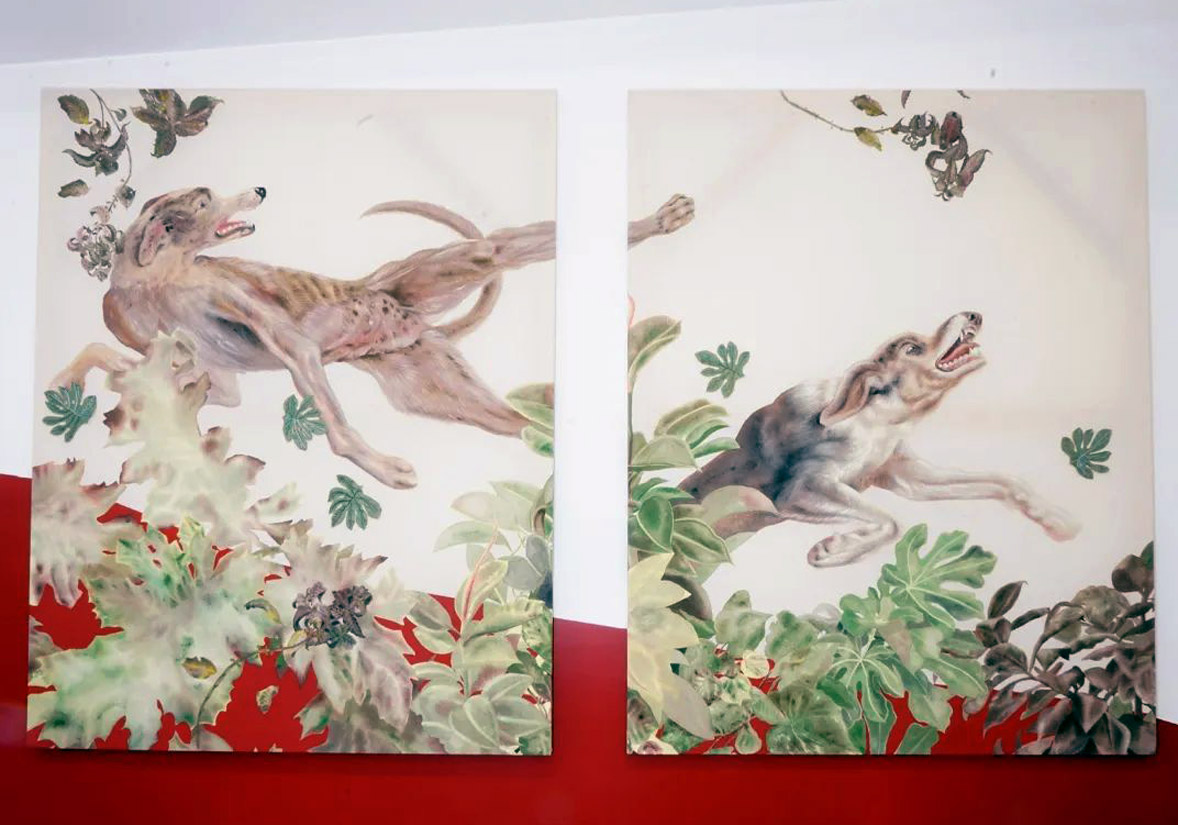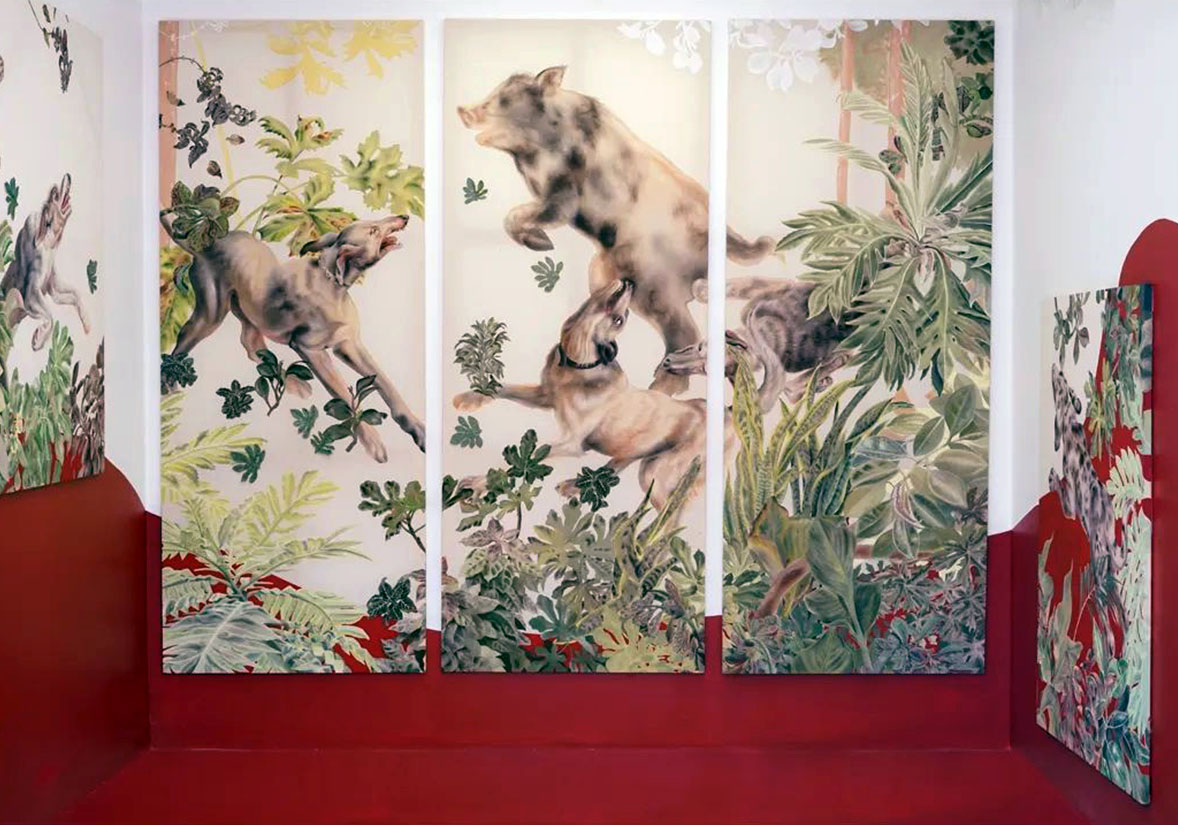In “Zibaldone,” Giacomo Leopardi contemplates the natural order as a cycle of destruction, reproduction, and perpetual flux. The Italian poet and philosopher later posits that predation epitomizes the inherent distortion within nature’s blueprint. His concern for the asymmetrical dynamics between predator and prey resonated with artists across eras, who portrayed these relationships not as condemnations but as metaphors of conquest and glory. From ancient cave paintings to modern museum collections, the primal instinct of hunting has been exalted in various forms. Recognizing the saturation of these motifs and their tendency toward trivialization, Ferrari revisits them to provoke fresh interpretations and stir new sensations.
In “Sangre y Polvo” (“Blood and Dust,”) the artist captures what might be the climactic moment of a confrontation between a pack of hounds and a wild boar. The dogs charge toward their quarry, their menacing gazes intensifying the tension. The boar’s expression remains obscured, inviting viewers to imagine the culmination of this primal struggle. Meanwhile, the tumultuous scene is framed by a verdant canopy, its foliage shimmering with luminous reflections that juxtapose the chaos below. These botanical specimens derive from the artist’s meticulous observations of plant life encountered in her daily sojourns through Mexico City—some indigenous, others adapted to thrive beyond their native habitat of Buenos Aires.
1/
Ferrari approaches his work in a departure from the conventional Western academic tradition, crafting his piece from what lies closest to what is beyond the immediate sight. This technique aims to establish an intimate connection between the viewer and the depicted scene. In contrast to the typical hunting genre, which often positions humans as active participants with decisive roles in the ritual of sacrifice, Ferrari removes the human figure from the canvas, placing the observer in front of the scene instead.
In this arrangement, the viewer becomes a silent witness to the acts of aggression and torture, positioned both outside, as a distant observer with no agency over the unfolding events, and inside, engulfed by the visceral atmosphere of violence. This approach challenges the notion of omniscient vision, suggesting that humans are not governed solely by primal instincts but also by emotions and motivations, rendering them flawed and vulnerable beings rather than exceptional entities.
The work prompts us to confront the existential absurdity of contemplating death while being alive, leading to a contemplation of the “dilemma of predation” and our moral responsibilities in the face of the violent realities that pervade the world. Through a rollercoaster of sensations ranging from pleasure to disgust, fascination to revulsion, beauty to ugliness, Ferrari’s piece compels us to peer beneath the veneer of civilization, revealing the concealed layers of daily violence driven not by survival instincts but by perverse desires.
Blood and Dust
* Exhibition
+ Ángela Ferrari
¬ laNao
∞ February to April 2022
Featured on:













